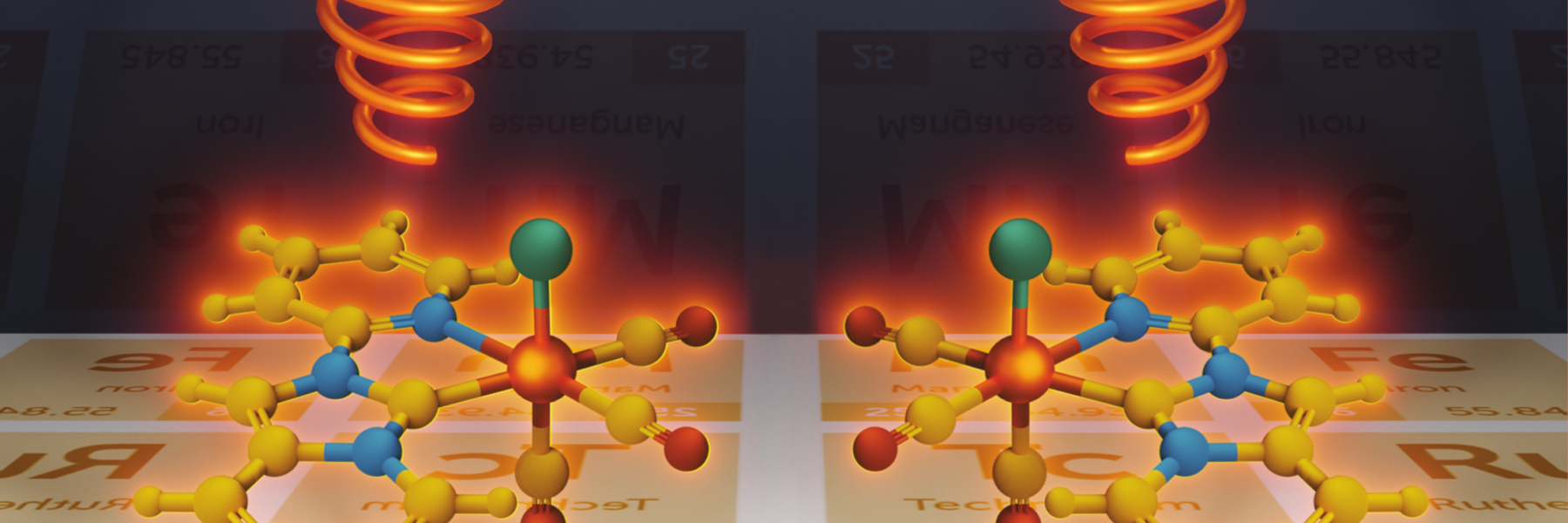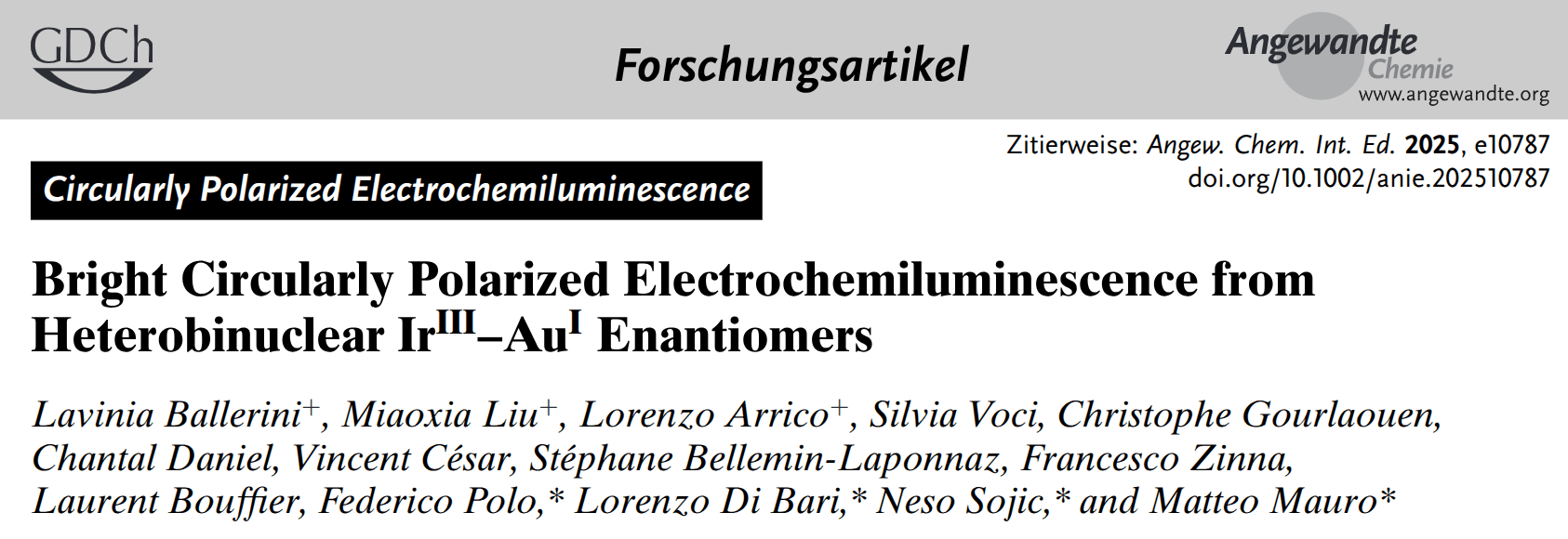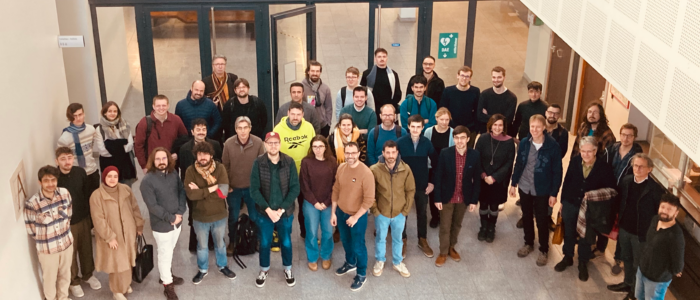Christophe Gourlaouen, Thomas Groizard, Chantal Daniel and coworkers are on the cover of Physical Chemistry Chemical Physics for their work on “Chiroptical activity of benzannulated N-heterocyclic carbene rhenium(i) tricarbonyl halide complexes: towards efficient circularly polarized luminescence emitters“: https://doi.org/10.1039/D3CP04300B

The design of enantiomerically pure circularly polarized luminescent (CPL) emitters would enormously benefit from the accurate and in-depth interpretation of the chiroptical properties by means of jointly (chiroptical) photophysical measurements and state-of-the-art theoretical investigation. Herein, computed and experimental (chiro-)optical properties of a series of eight enantiopure phosphorescent rhenium(I) tricarbonyl complexes are systematically compared in terms of electronic circular dichroism (ECD) and CPL. The compounds have general formula fac-[ReX(CO)3(N^CNHC)], where N^CNHC is a pyridyl benzannulated N-heterocyclic carbene deriving from a (substituted) 2-(pyridin-2-yl)imidazo[1,5-a]pyridin-2-ium proligand and X = Cl, Br and I, and display structured red phosphorescence with long-lived (τ = 7.0–19.1 μs) excited-state lifetime and dissymmetry factors |gLum| up to 4 × 10−3. The mixing of the character of the lowest-lying emitting triplet excited state is finely modulated between ligand centred (3LC), metal-to-ligand charge transfer (3MLCT) and halogen-to-ligand charge transfer (3XLCT) by the nature of the ancillary halogen and the chromophoric N^CNHC ligand. The study unravels the effect exerted by the nature of the excited state onto the ECD and CPL activity and will help to pave the way to construct efficient CPL emitters by chemical design.













